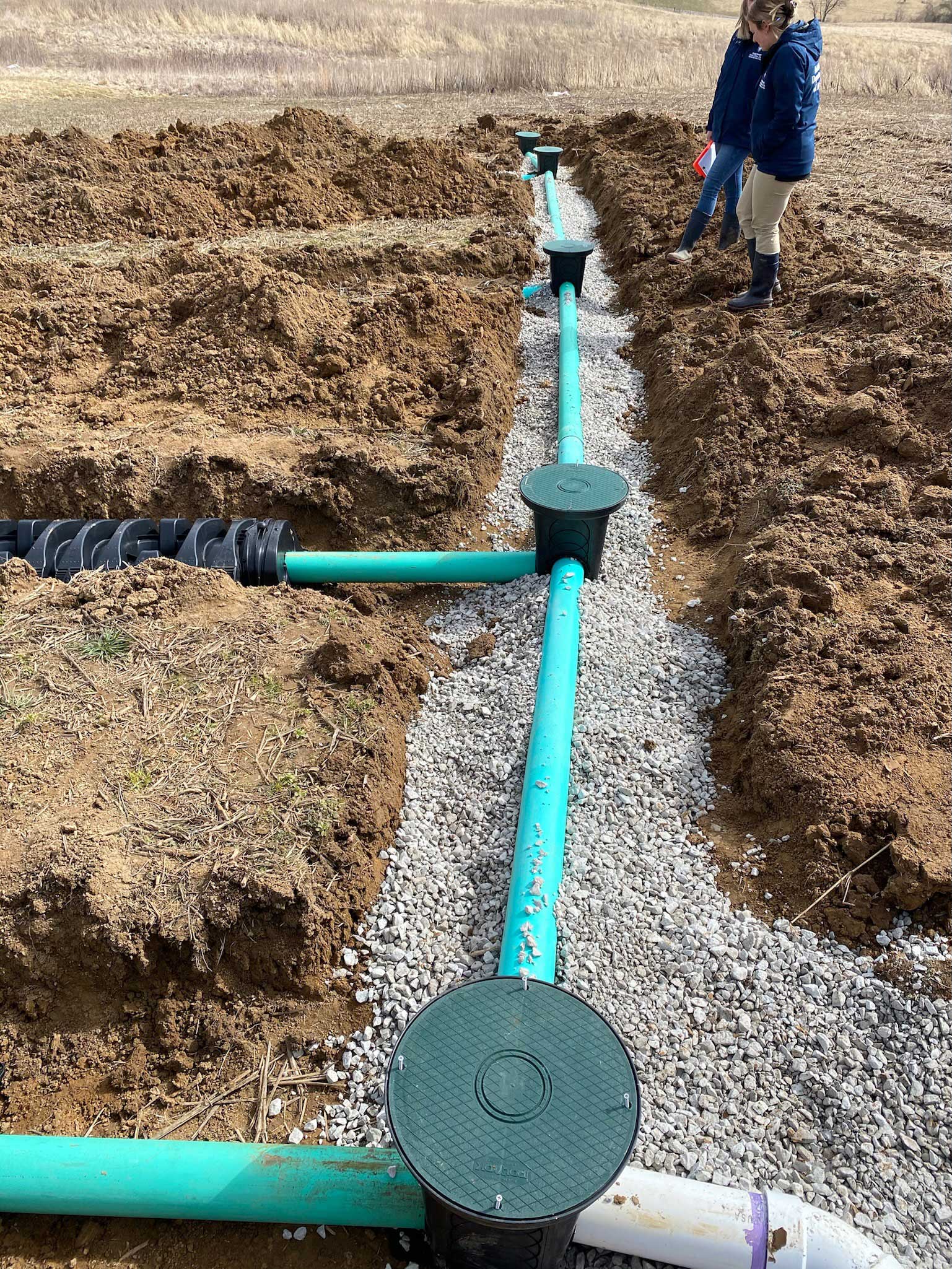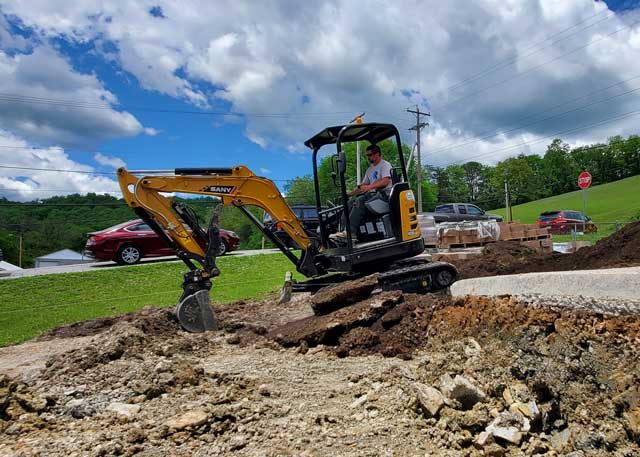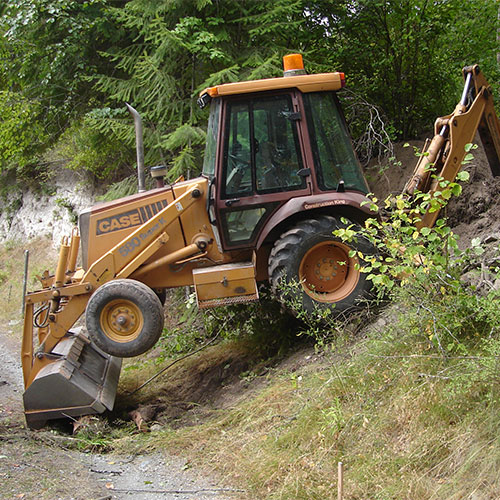Revealing the Art of Excavation: Pro Tips for Safe and Effective Digging
In the realm of excavation, the proficiency of risk-free and effective excavating is an art type that calls for adherence, understanding, and accuracy to established methods. As dirt is turned and earth is relocated, the complexities of excavation disclose themselves, demanding a keen understanding of tools, soil structure, safety and security protocols, and ecological factors to consider. The experience needed to navigate these components properly can mean the distinction between a successful excavation project and a prospective calamity. By unwinding the layers of this intricate process, a globe of understandings and techniques awaits those looking for to elevate their excavation skills to brand-new heights.
Relevance of Correct Equipment
To guarantee the safety and effectiveness of any type of excavation task, using the suitable devices is paramount. Excavation projects vary in extent and complexity, ranging from tiny domestic landscaping jobs to massive building and construction endeavors.
These versatile equipments come in various sizes to match various project demands. Mini excavators are suitable for smaller sized jobs, while bigger excavators take on more extensive jobs efficiently.
Excavators stand out in tasks that need pushing large amounts of dirt or debris. By spending in the appropriate devices, excavation jobs can be finished safely, on time, and with accuracy.
Recognizing Dirt Composition
A thorough understanding of soil composition is fundamental for executing excavation tasks with accuracy and security. Recognizing the various sorts of soil is important as it straight impacts excavation approaches, devices option, and overall job performance. Soil make-up typically contains 4 major parts: sand, silt, clay, and raw material. Each component has distinct properties that influence just how dirt responds to excavation processes.
Sand bits are the biggest and supply great drainage however provide little cohesion. Silt bits are smaller than sand but bigger than clay, offering modest drain and communication. Clay bits are the tiniest and offer high communication but poor drainage. Organic matter, such as rotting plant material, affects dirt fertility and stability.
Prior to starting excavation, performing dirt examinations to determine its composition and qualities is vital. This information helps in choosing the suitable devices, applying precaution, and establishing excavation techniques tailored to the specific dirt conditions - lancaster excavation. By recognizing dirt structure, excavation specialists can improve job end results while ensuring safety and adherence to ideal practices
Security Steps and Protocols
Recognizing dirt structure is the keystone upon which safety and security actions and procedures for excavation tasks are built, making certain the health of employees and the success of the undertaking. When it comes to safety during excavation, there are numerous crucial procedures that have to be applied to alleviate dangers and avoid crashes.
Firstly, before any type of digging commences, a thorough evaluation of the website need to be conducted to identify any prospective risks such as below ground utilities, unsteady dirt problems, or close-by structures that could pose a danger. It is essential to have a competent individual oversee the excavation process to guarantee that all safety and security methods are complied with purely.
Moreover, all workers involved in the excavation must be correctly educated in safe excavating techniques and the correct operation of tools. By adhering to these safety measures and procedures, excavation jobs can be finished efficiently and without case.
Efficient Excavation Preparation
When embarking on an excavation project, precise planning is vital to make sure effectiveness, safety, and successful outcomes. Efficient excavation preparation includes several vital steps that are crucial for the smooth execution of the job. The initial step is to perform a comprehensive website evaluation to identify any potential threats, such as below ground energies or unsteady soil conditions. This information is vital for creating an in-depth excavation plan that consists of precaution and take the chance of reduction strategies.
As soon as the site evaluation is full, the next step is to create a clear timeline and timetable for the excavation tasks. This consists of identifying the series of jobs, equipment requirements, and manpower allowance. Appropriate scheduling aids avoid hold-ups and guarantees that the job remains on track.

Moreover, communication among all staff member is extremely important throughout the preparation stage. basics Clear regulations, normal updates, and effective coordination are essential for an effective excavation job. By spending effort and time in thorough planning, excavation groups can considerably improve efficiency, minimize threats, and attain successful outcomes.

Managing Ecological Considerations
With enhancing focus on environmental sustainability in building techniques, managing ecological considerations has actually ended up being a vital aspect of excavation jobs. Excavation tasks have the potential to influence the surrounding environment with soil disintegration, debris overflow, habitat interruption, and contamination of water sources. To reduce these risks, it is necessary to implement finest practices that prioritize environmental defense.

Moreover, proper waste monitoring is vital to avoid soil and water contamination. Applying procedures for the disposal of harmful materials, recycling of waste materials, and lessening using hazardous chemicals can considerably minimize the environmental effect of excavation projects. By incorporating these methods into excavation preparation and execution, construction business can ensure that their tasks are not just risk-free and productive however additionally ecologically accountable.
Verdict
Finally, mastering the web link art of excavation needs a comprehensive understanding of correct tools, dirt make-up, safety and security measures, and reliable planning. By adhering to these standards and considering environmental variables, excavations can be conducted securely and effectively. It is critical to prioritize security and efficiency in every digging project to ensure effective results.
As dirt is transformed and planet is relocated, the complexities of excavation expose themselves, requiring an eager understanding of equipment, soil structure, security protocols, and environmental factors to consider.To make sure the security and performance of any kind of excavation job, utilizing the appropriate equipment is critical.A comprehensive understanding of soil structure is fundamental for implementing excavation jobs with accuracy and safety and security. Understanding the different kinds of soil is essential as it straight affects excavation methods, tools choice, and total job my explanation effectiveness. By understanding soil make-up, excavation professionals can improve project outcomes while guaranteeing security and adherence to finest techniques.